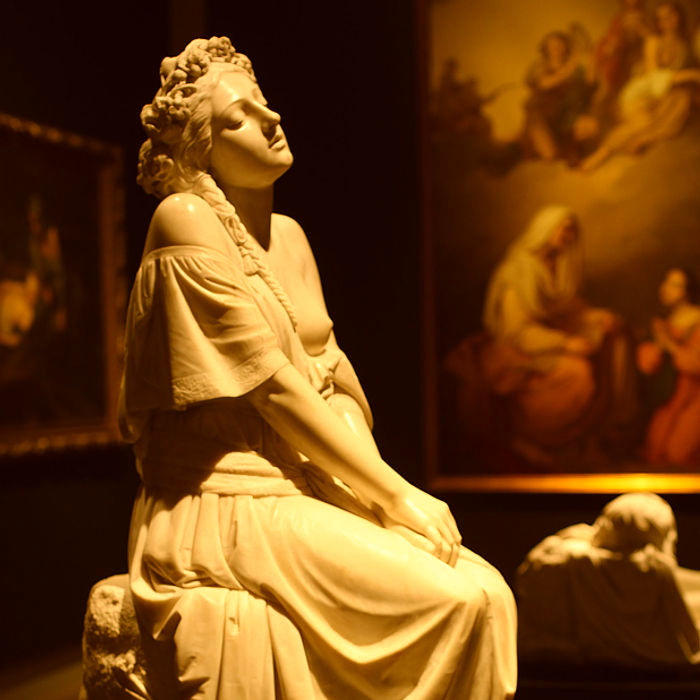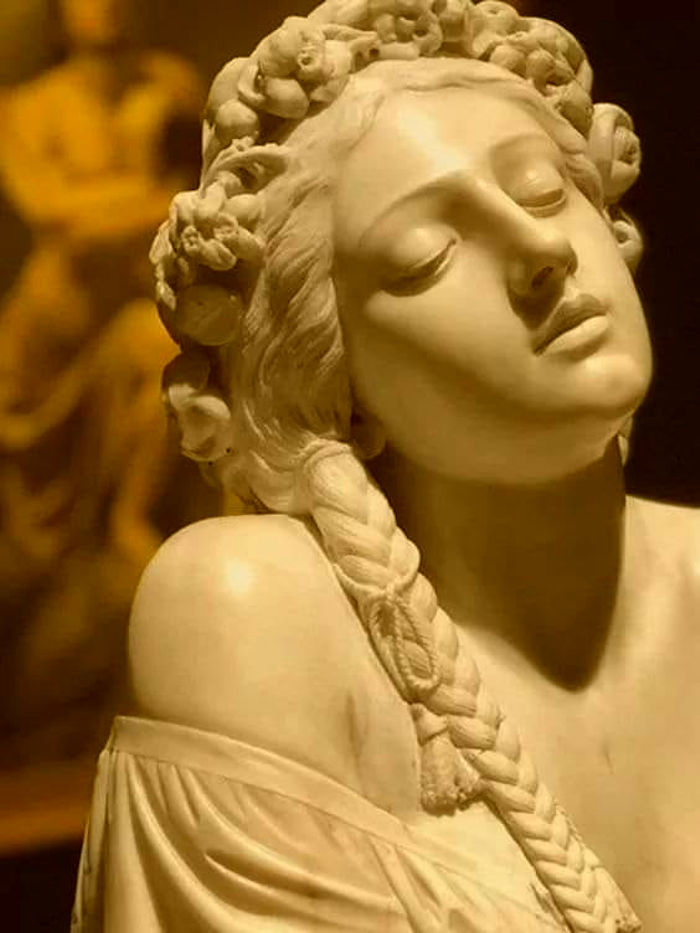Have you ever read the Song of Songs? It is a singular and captivating text that is part of the Bible, a literary jewel that has puzzled and fascinated theologians, poets, and artists for centuries. At first glance, it narrates the passionate story of two lovers: a young shepherd and the beautiful Shulamite, a figure of unparalleled beauty and charm. It may seem strange that such an intense, almost erotic love poem in its language and description, achieved such a prominent place in the canon of the Holy Scriptures.
The book is undeniably passionate, a torrent of overlapping emotions and strong feelings, creating an atmosphere of desire and longing that transcends the merely earthly. The dramatic tension of the Song of Songs centers on a deeply symbolic love triangle. Two men covet the affection of the same woman, the Shulamite. One is the powerful King Solomon, son of David, known for his wisdom and immense wealth. The other is a humble young shepherd to whom the Shulamite is engaged and whom she truly loves. Riches, honors, and all the splendor that the royal environment could offer a woman are a monumental temptation. The Shulamite, originally from the countryside, could easily have become the favorite in the king's harem. However, in an act of deep fidelity and nobility of spirit, she prefers the true, pure, albeit poor, love of the young shepherd.
This love is described with immeasurable magnitude, in verses that have echoed through the millennia: "Many waters cannot quench love, neither can the floods drown it." This is the central and eternal teaching of these enchanting verses: the wealth and power of a man are incapable of buying genuine love, for if they could, it would cease to be love. The Shulamite embodies the virtue of choosing sincere affection over material gain and worldly vanity.
The Beauty Born from the Soul: The Figure of the Shulamite
The Shulamite is much more than a beautiful face; she is rich in the gifts of God. She possesses exemplary beauty, great sweetness, nobility of soul, and a charm capable of seducing King Solomon himself, who, according to the sacred text, had more than a thousand wives and concubines. But here, the king finds something different and enchanting: a beauty that emanates from within, a beauty of the soul that does not fade with the years nor is measured by the harmony of her features.
It is the kindness of the Shulamite's heart, accompanied by a kind of defenseless fragility, that increases her charm and arouses feelings of pure love. The Song narrates the suffering the young woman is forced to endure early on; she was mistreated by her brothers, who sent her to tend the vineyards. Her complexion, always exposed to the heat of the sun, is dark, and she proudly defines herself in the famous verses: "dark, but lovely" (or "I am black, but beautiful," according to some translations). This detail, her sun-darkened skin, distinguishes her from delicate palace beauty, affirming the dignity of her labor and origin.
The king's guards, noticing this beautiful Lebanese creature, bring her to the palace where King Solomon, drunk with love and fascinated by her untamed spirit, declares his passion, offering her luxuries and security.

The Conflict between Royal Desire and Country Fidelity
The Song of Songs is a continuous and poetic dialogue. The king tries to persuade the Shulamite with promises of gold, silver, and a place of honor. The young woman, however, never stops thinking of her fiancé, the shepherd. Her monologues and responses are filled with melancholy and longing for the countryside and for her simple, yet true, love. The contrast between the palace's opulence and the vineyard's simplicity symbolizes the conflict between material love and spiritual love.
The young shepherd, her fiancé, is unwilling to lose his beloved. Risking his life, he follows her to the vicinity of the palace, ready to challenge the king for her love. Faced with such intense love, described as "strong as death," King Solomon, despite all his power, surrenders. This surrender is, perhaps, the most crucial and profound point of the book. It demonstrates that neither power nor wealth can bend the strength of will and fidelity of a truly loving heart.
The king yields and lets her leave for her country wedding. It seems like a story of melodrama or romantic legend, but it is written in the Bible precisely to impart a spiritual and moral teaching. The strength of this sensitive heart, which is not clouded by temptation, teaches us that true love not only triumphs over wealth, but that a heart that loves is a heart that rejoices, laughs, and is happy, despite external obstacles.
In a key passage, King Solomon asks the woman to dance. She does not refuse, showing innate courage and grace. Her love manages to burst forth in such a way that she becomes even more beautiful in the eyes of the king, a beauty that emanates from her resistance and inner truth, which has nothing to do with the sinuosity or perfection of her physical body.
The Allegorical Meaning and Artistic Tradition
The complexity of the Song of Songs lies in its multiple interpretations. While the literal reading is a poem of human love, Jewish and Christian traditions have given it a profound allegorical meaning:
- For the Jewish tradition, the poem symbolizes the ardent love between God (the King/Shepherd) and Israel (the Shulamite), his chosen wife.
- For the Christian tradition, it represents the mystical love between Christ (the Bridegroom) and the Church or the Faithful Soul (the Bride).
In this light, the Shulamite becomes the symbol of pure, unwavering, and faithful faith. King Solomon, with his riches, represents the temptations and vanities of the world that try to divert the soul from its true promise to God. The Shulamite's victory is the victory of the spirit over matter.
The immensity of this metaphor inspired artists during Neoclassicism and Romanticism. The figure of the Shulamite, as an ideal of beauty and fidelity, was immortalized by sculptors like Gaetano Motelli.

The Bride of the Holy Canticles by Gaetano Motelli
The Bride of the Holy Canticles (La Sposa dei Sacri Cantici) is one of the most important sculptures by Gaetano Motelli, created in 1854. The languid figure represents the Shulamite in a pose that evokes her sweetness and sweetly dreamy air. When exhibited in Milan, it aroused great attention due to the ambiguous tension of her pose.
The pose of the arms and hands crossed in front could be interpreted in various ways: as virginal modesty, as defense against royal seduction, or as a deep meditation on her love. This contrast between the expression of serenity on the face and the tension in the body makes the work captivating and complex, challenging simple representations of religious themes.
At the end of the Song, the Shulamite declares her ardent love for her fiancé with one of the most famous phrases: "Set me as a seal upon your heart, as a seal upon your arm: for love is strong as death." We are capable of understanding the grandeur and depth of these verses written centuries before Christ, but which teach us today that conjugal love is a seal, a promise of absolute fidelity. The Song of Songs is, in essence, the consecration of the Bride, considered the supreme song of Divine Love.
The poem opens with an exclamation of pure desire and longing:
Oh, that you would kiss me with the kisses of your mouth!
For your love is better than wine.
Pleasing is the fragrance of your perfumes,
Your name is like perfume poured out.
Therefore the maidens love you!
Take me away with you—let us hurry!
The king has brought me into his chambers!
This fragment not only expresses love for the shepherd but also the soul's yearning to be led to the encounter with its King, a desire so strong that it breaks the barriers of prudence. The Shulamite is, in short, the personification of triumphant fidelity.

THE WORK
The Bride of the Holy Canticles (The Shulamite)
Artist: Gaetano Motelli
Medium: Marble Sculpture
Year: 1854
Collection: Civic Museums of Monza



